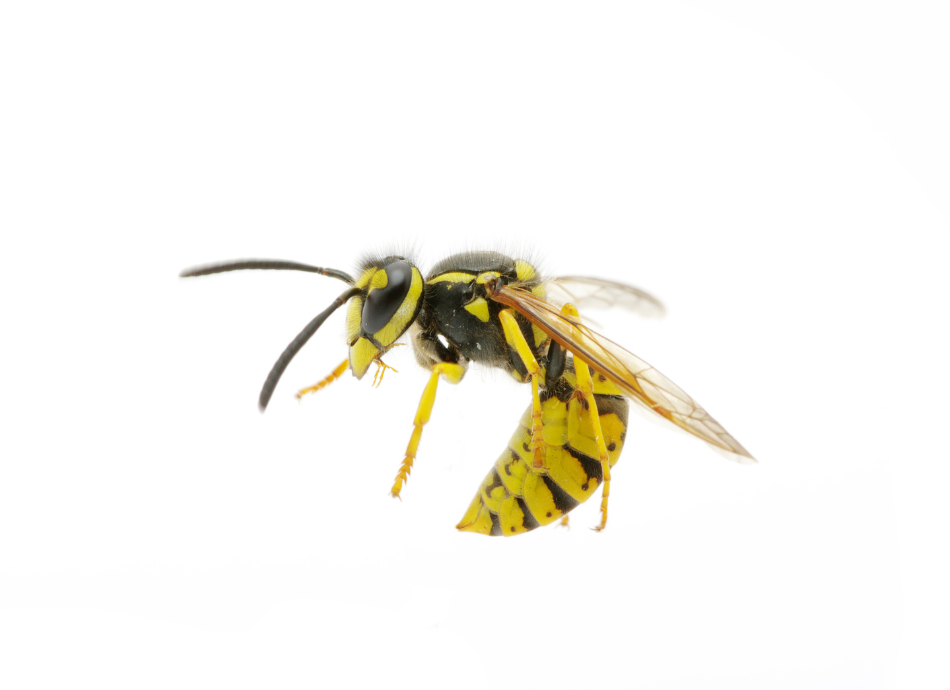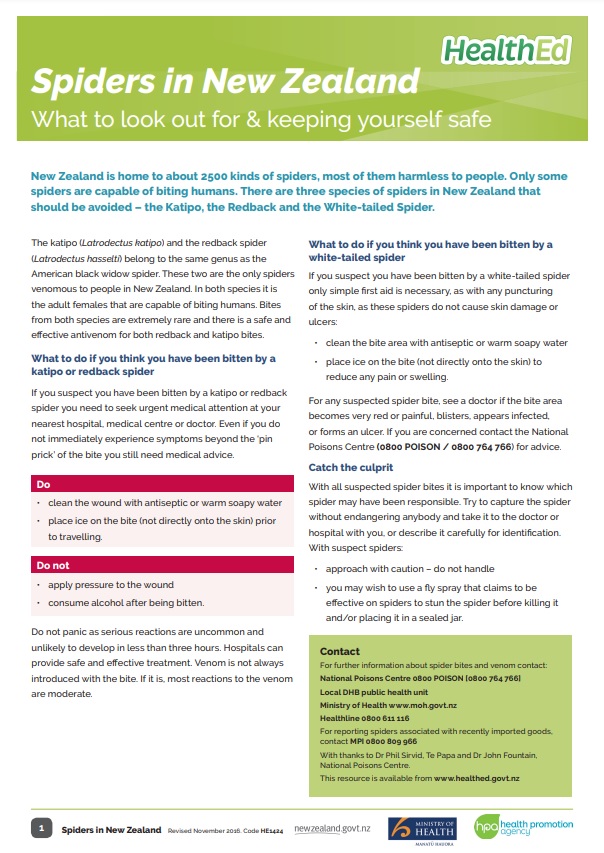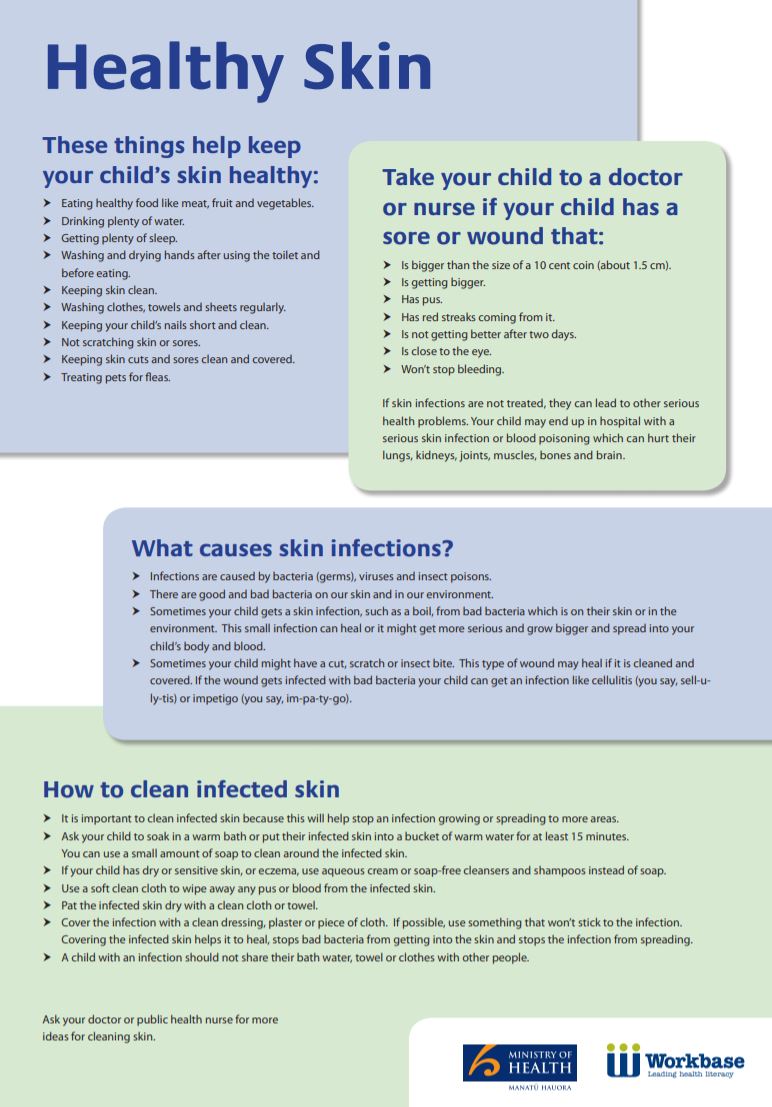Insect bites and stings
Key points about insect bites and stings
- In Aotearoa New Zealand, there are a number of common biting and stinging insects.
- Both stings and bites can be painful but are not usually dangerous or life-threatening.
- They can usually be treated at home with ice packs, aloe vera, paracetamol and antihistamines.
- Call 111 if you or someone else has symptoms of a severe allergic reaction.

An insect bite is when an insect pierces your skin to feed on blood, which usually results in intense itching. Insects that bite include:
- mosquitoes
- fleas
- ticks
- bed bugs
- sandflies
- some ants (not usually found in NZ).
An insect bite usually produces a red, itchy bump or blister. Sometimes the bites can be painful. Scratching can make it worse. In most cases, insect bites go away on their own after a few days. Occasionally a blister or ulcer (break in the skin) may form, which takes longer to heal, especially if it becomes infected.
A sting is when an insect or invertebrate (eg, jellyfish) injects toxin and painful poison (venom) through its stinger. Examples include:
- bees
- wasps
- spiders
- jellyfish.
A sting usually causes a sharp stinging feeling with pain, redness and swelling in the area. In some people, bee and wasp stings can cause a serious allergic reaction called anaphylaxis.
It requires immediate treatment and urgent medical attention – call 111.
Symptoms of anaphylaxis include:
- swelling around the lips and eyes
- a rash appearing within minutes
- shortness of breath or wheezing
- chest tightness
- severe dizziness or faints
- persistent sneezing or coughing
- hoarse voice
- difficulty swallowing or throat tightness
- signs of shock such as pale skin, rapid heart beat and fainting.
Read more about anaphylaxis.
Scratching the bites or stings can cause the skin to break, increasing the risk of infection. Here are some tips to ease the itching and discomfort:
- Wash the bitten area with cool water or apply a damp cloth that’s been soaked in ice water.
- Try holding an ice pack (frozen peas in a tea towel or a sports icepack) on the area for up to 10 minutes at a time.
- Try soaking in a cool bath, putting calamine lotion, aloe vera or an antihistamine cream like Soov on the bites.
- If you have pain, try taking pain relief, eg, paracetamol.
- Antihistamines (eg, cetirizine or loratadine) may relieve itching and swelling. Read more about antihistamines.
- Check and clean the bitten area every day.
- If your child has been stung or bitten, keep their nails trimmed and clean. This reduces the damage from scratching and may reduce the risk of infection.
Removing a bee sting

Image credit: Canva
If you've been stung and the sting has been left in your skin, you should remove it as soon as possible to prevent any more venom being released. Bees leave their sting in a person and wasps don't.
- Scrape it out sideways using something with a hard edge, eg, a bank card, or your fingernails if you don't have anything else to hand.
- Don't pinch the sting with your fingers or tweezers because you may spread the venom.
- Follow the self-care advice above.
- Watch the person for signs of an allergic reaction.
Spider bites
In Aotearoa New Zealand, most spiders are harmless but if you suspect the bite of a katipō, red-back or a white-tailed spider, see your healthcare provider or call the National Poisons Centre on 0800 764 766 for first aid advice and treatment of bites.
Apps reviewed by Healthify
You may find it useful to look at some First aid and emergency apps.
If you think someone is having an allergic reaction to a sting, call 111 for an ambulance right away.
Remember, if you suspect the bite of a katipō, red-back or white-tailed spider, see your healthcare provider or call the National Poisons Centre on 0800 764 766 for first aid advice and treatment of bites.
Sometimes bites and stings can become infected and cause a skin infection called cellulitis. Seek medical advice if:
- the bites last more than 2 weeks and aren't getting better
- the red, swollen area keeps getting bigger and more painful
- there is pus in the lesion
- the bite or sting is near the eye
- you have pain that isn't controlled using the self-care instructions
- you develop new symptoms or have any other concerns.
Do:
- Treat pets for fleas. Fleas can also live in bedding, carpets and soft furnishings like sofas, cushions and pillows. Also vacuum rugs and furniture well.
- Use an insect repellent beforehand if you're outside and there is a chance of being bitten by insects like mosquitoes and sandflies.
- Cover up when sitting outdoors from dusk and in the evenings, including your ankles and feet.
- Avoid mosquitoes breeding around your house by checking ponds and emptying any garden pots or containers with water in them.
- Keep windows and doors closed at night, or put insect screens on open windows and mosquito nets around beds. Wear close-fitting clothes or pyjamas. Turn on air conditioning if you have it. This works well to keep mosquitoes away.
- Burn a citronella candle to help deter mosquitoes and sandflies in a small area.
- Destroy or relocate wasp nests and bee hives close to your home.
Don't:
- Take thiamine or any other vitamin B supplements. There is no evidence this helps.
Pests, insects, bites and stings(external link) Health New Zealand | Te Whatu Ora
Sandflies(external link) Health New Zealand | Te Whatu Ora
Bee and wasp stings(external link) Health New Zealand | Te Whatu Ora
Spider bites(external link) Health New Zealand | Te Whatu Ora
Insect repellents(external link) DermNet NZ
Bites and Stings(external link) St John, NZ
Nippy creatures that share your swim(external link) NIWA, NZ
Apps
Resources
Insect bites(external link) Health Literacy, NZ
Keeping skin healthy(external link) Health Literacy, NZ
Spiders in New Zealand(external link) HealthEd, NZ
References
- Insect bites(external link) Health New Zealand | Te Whatu Ora
- Bee and wasp stings(external link) Health New Zealand | Te Whatu Ora
- Sandflies(external link) Health New Zealand | Te Whatu Ora, 2023
- Spider bites(external link) Health New Zealand | Te Whatu Ora, 2023
- Insect repellents(external link) DermNet NZ, 2023
- Arthropod bites and stings(external link) DermNet NZ, 2015
- Bites and Stings(external link) St John, NZ
- Topical local anaesthetics and antipruritics(external link) NZ Formulary
Brochures
Credits: Healthify editorial team. Healthify is brought to you by Health Navigator Charitable Trust.
Reviewed by: Dr Janine Bycroft, GP, Auckland
Last reviewed:








